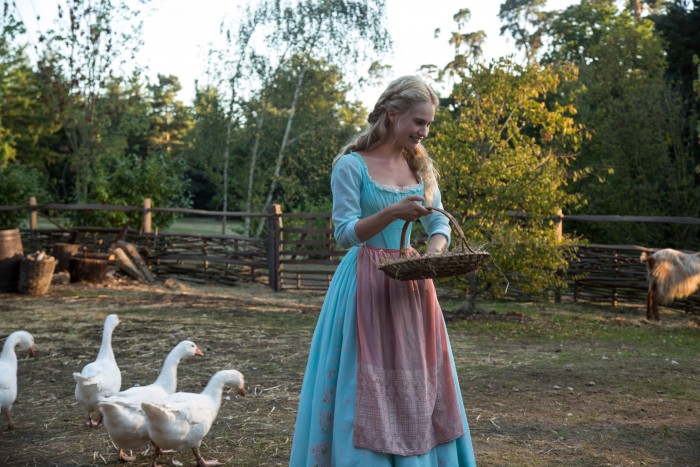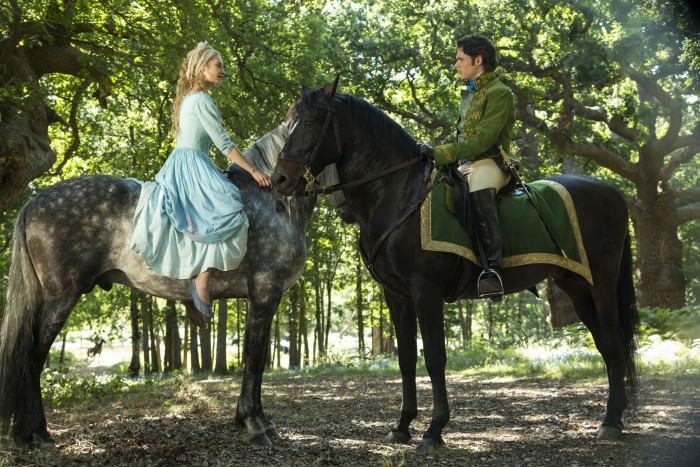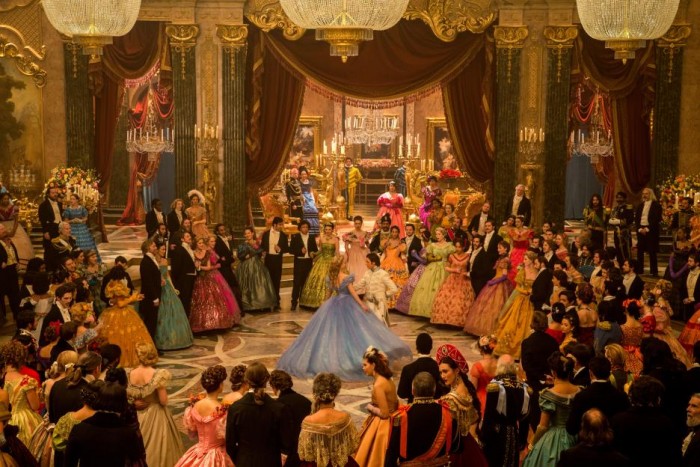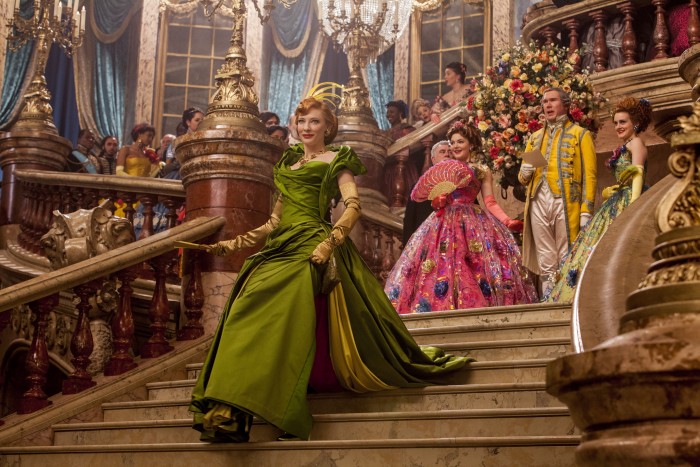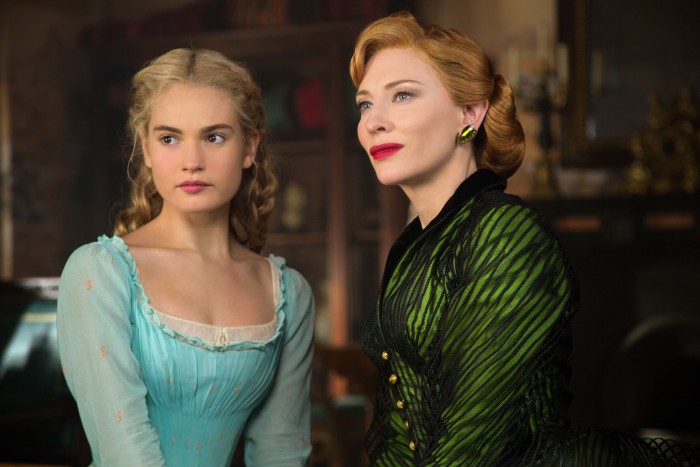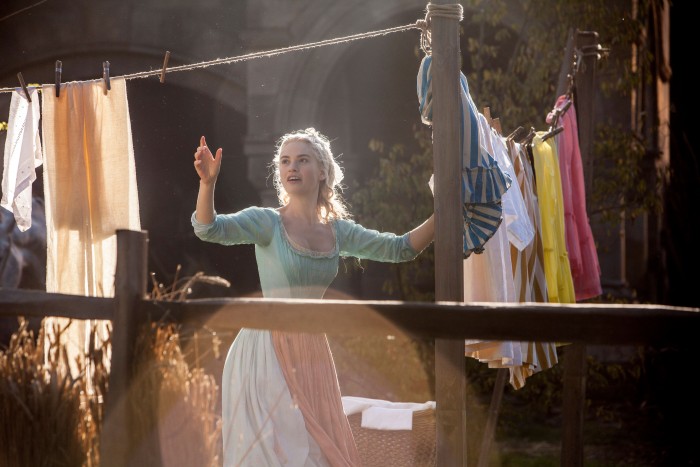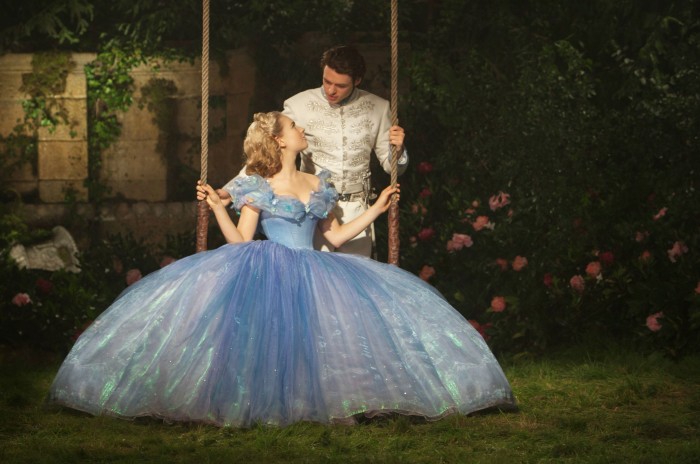How 'Cinderella' Succeeds Where Disney's Other Live-Action Fairy Tales Have Failed
On paper, Kenneth Branagh's Cinderella sounds like Disney's laziest live-action fairy tale adaptation yet. Unlike Maleficent or Oz the Great and Powerful, it doesn't claim to reveal some untold story; it doesn't even offer a new ending, like Alice in Wonderland did. It's simply a new telling of the same old story.
But that, it turns out, is exactly why it succeeds. By reminding us why we love this story so much in the first place, Disney manages to make the old feel fresh again.
Going Back to Basics
Rather than try and upend our expectations, Cinderella doubles down on the story's most potent elements: its good-hearted heroine and its wish-fulfillment romance. Where Branagh and screenwriter Chris Weitz embellish on the classic fable, they do so to strengthen that foundation.
So Cinderella (Lily James) gets a bit of backstory that establishes her goodness as a choice, rather than as an innate and immutable trait. In this telling, she embraces her dying mother's advice to "have courage and be kind" as a sort of personal motto, and clings to her childhood home for sentimental reasons.
Cinderella's prince, here named Kit (Richard Madden), is also further fleshed out. Instead of the handsome cipher of Disney's 1951 Cinderella, he's an earnest young man who lives by the same motto Cinderella does. Their shared values make Cinderella and Kit a natural fit, which in turn makes their whirlwind courtship feel more fulfilling.
Sincerity Can Be Charming
In addition to playing up the story's essential appeal, Cinderella embraces its status as a fairy tale, in the classic, midcentury-Disney-movie sense. There are no attempts to make Cinderella "grittier" or "more realistic," the humor is more goofy than snarky, and there's not a trace of cynicism or condescension to be found.
Once upon a time, such sincerity might not have been noteworthy, but in a movie landscape riddled with tortured superheroes and grimy fantasies, it feels downright revelatory. Interestingly, it doesn't turn Cinderella into a kids-only affair, but a true all-ages one. Without the usual embarrassed acknowledgements that this is kid stuff, I was able to enjoy Cinderella the way I might have as a kid — with awe and wonder.
Imagination Runs Wild
Adding to that sense of wonder is Cinderella's refreshingly unique design. By all rights, the fantasy genre should be the one place where artists can let their imaginations truly run wild. There are literally no rules other than the ones directors and designers create themselves. Yet there's a dispiriting sameness to the ones we've seen in the past decade. Maleficent looks like Snow White and the Huntsman looks like Jack the Giant Slayer looks like Lord of the Rings.
You'd never confuse the setting of Cinderella for anything other than itself. Branagh and his team (including production designer Dante Ferretti and costume designer Sandy Powell) mix and match a variety of influences to come up with a look that's totally their own. '50s ballgowns are decorated with '90s motifs; a vaguely medieval kingdom is awash in bright modern colors. All of the colors are rich and saturated, in contrast to the muted palettes that are currently in vogue. The results feel both fresh and quaint — in a word, timeless.
And while I couldn't say for certain how much CG was employed in the making of this movie, Cinderella feels like it's composed mostly of practical sets and effects. (If I'm wrong, that's just a testament to the artists' skill.) There's a solidity and a roughness to it, in contrast to the slick weightlessness of CG-heavy films like Alice in Wonderland.
Vivid Characters and a Bright Cast
Of course, none of this — not the eye-popping design, the straightforward tale, the earnest tone — would work without the right actors to sell them. Cinderella in particular is a character who could've come across as annoying or downright stupid in the wrong hands, but James finds the grit buried under her sugar-sweet persona.
Similarly, Blanchett anchors her vampy performance in real pain and anger. But her biggest contribution to the film may be her innate stylishness. Not even Cinderella herself can make a gown sing the way Blanchett can.
And Madden, it turns out, has a boyish charm when he's not buried in facial hair and angst for Game of Thrones. He nails the part of a young man giddy with love, whether he's fighting to keep a grin off his face or gazing into Cinderella's eyes with as much intensity as he can get away with within the confines of a PG rating.
Beyond the "Strong Female Character"
There's no question that this Cinderella is a step forward from her 1951 counterpart, who was a much more passive sort. But Cinderella also feels like a step forward from her more recent sisters. While not a "strong female character" in the warrior princess sense, Cinderella is Disney's best live-action fairy tale heroine yet.
Cinderella has clearly outlined motivations and a distinct personality. She's defined by her own decisions, thoughts, and actions, rather than her relationship to other characters. Which sounds like a low bar to cross, I know, but that's more than you can say for most of Disney's other heroines.
In the past few years, Disney has turned two iconic female villains (Maleficent and the Wicked Witch of the West) into women defined by their mistreatment at the hands of a man. Alice fared slightly better, as she took a more proactive role in her own journey, but the character felt more like a generic hero than a unique personality. And those are the major characters — others, like Glinda, Evanora, and Aurora mostly just served to advance the protagonists' stories.
A Different Kind of Heroism
In addition to being better written than your average "strong female character," Cinderella also demonstrates a different kind of strength. She is heroic not because of the monsters she can defeat on the battlefield, but simply because she makes the decision to be good — even when it's difficult for her, or when it comes at great cost to herself.
The key word there is "choice." In most incarnations of this story Cinderella's goodness is portrayed as an innate and immutable characteristic, and it goes hand-in-hand with her docility. In this Cinderella, goodness is a decision she makes every day, for her own very specific reasons, and it feels like a small rebellion against her stepfamily's determination to break her.
In fact, Cinderella's stepmother is the foil that helps drive the point home. It's revealed late in the film that she has suffered losses similar to Cinderella's. But whereas Cinderella tries to honor her family's memory by being her best self, Lady Tremaine has let her grief and anger turn her bitter.
Interestingly and somewhat unusually, Cinderella's goodness isn't coded as feminine. Fairy tales are replete with girls who serve as moral beacons while boys go about the dirty business of war. But in Cinderella, Kit, the only major male character, lives by the same philosophy she does.
Disney Moves Forward By Looking Back
In some ways, Cinderella is the most traditional film to come out of Disney's live-action fairy tale machine. But instead of feeling like a throwback, it feels like a bold step forward. For all their newness, Disney's other fairy tales have had the whiff of desperation about them. The old stories aren't enough, so they need to be reinvented with more battles, more CG monsters, more "strong female characters" and an edgier tone.
Cinderella adds some new dimensions and flavors to the classic, but it's not so much a reinvention as an upgrade — the same old thing, only better. It's the first film since Disney's live-action fairy tale obsession kicked in to suggest there's actual value (beyond the obvious monetary kind) in revisiting these classic tales. Which comes as a relief, seeing as new versions of Jungle Book, Beauty and the Beast, and Dumbo are already in the works at the studio.

